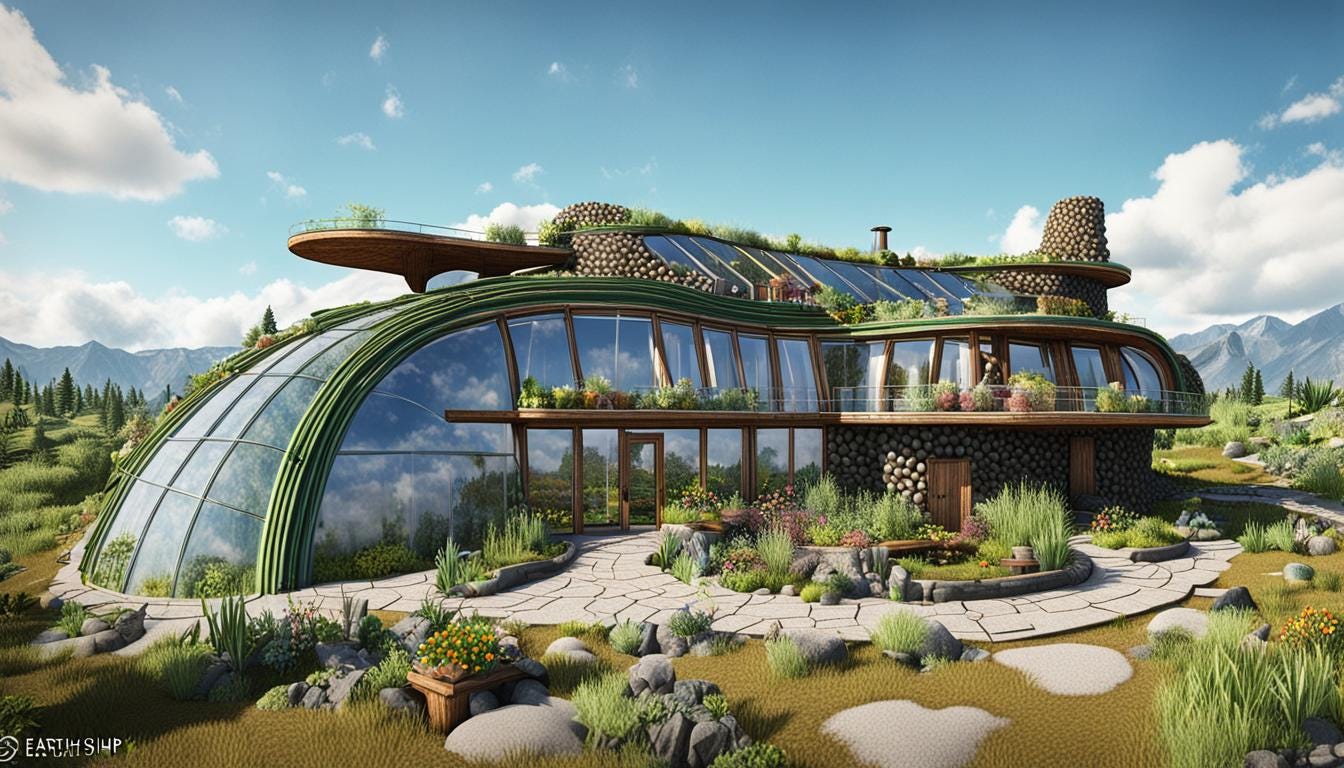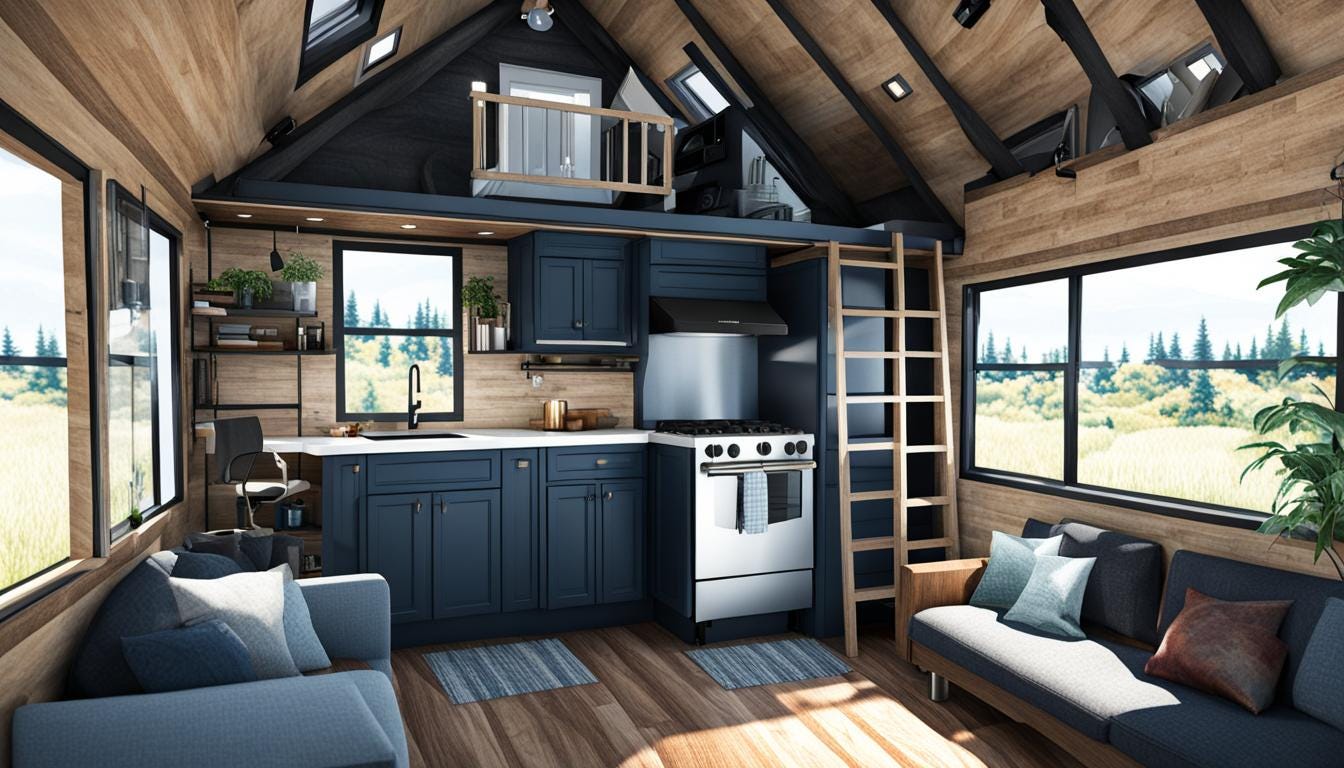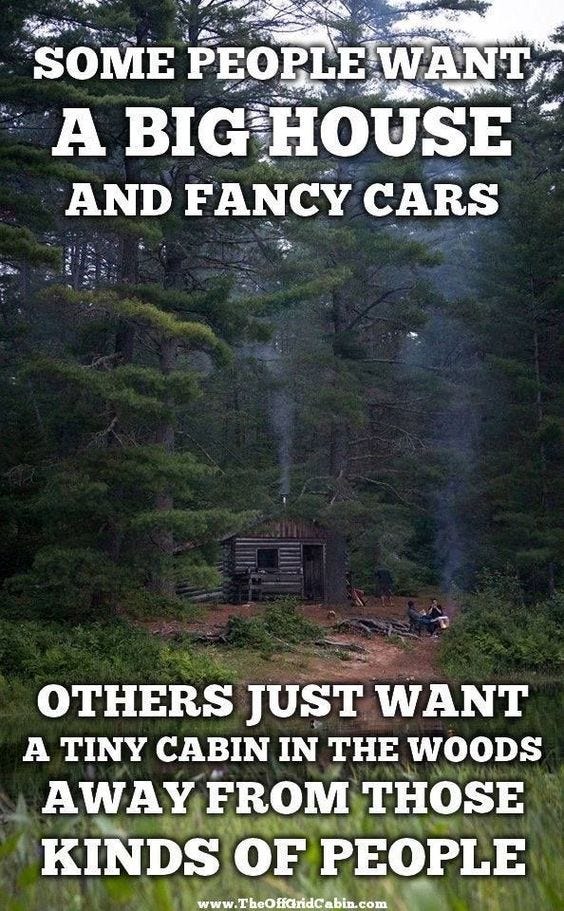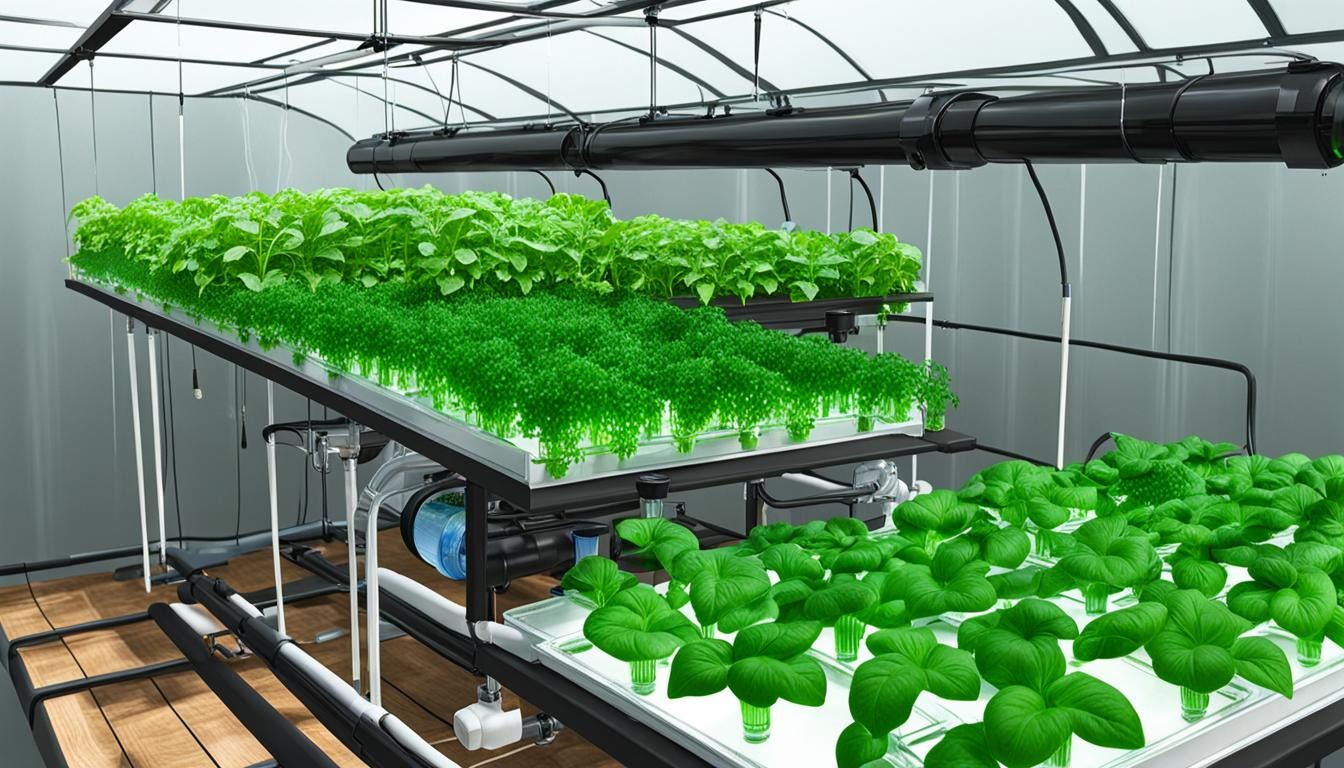Hi,
I am going to start out by stating that, until a few weeks ago, I had not heard of an “Earthship”. I listen to a lot of podcasts and the concept came up in one of the chats there.
My understanding is that an Earthship is a type of sustainable, off-grid building designed to work in harmony with the environment. Apparently, the original idea came from architect Michael Reynolds, Earthships are primarily constructed using natural and recycled materials like earth-packed tires, bottles, and cans. They are designed to maximise energy efficiency, incorporating passive solar heating and cooling, rainwater harvesting, and renewable energy sources such as solar and wind power. Earthships also feature integrated systems for water purification, sewage treatment, and food production, aiming to reduce the need for external utilities and minimise environmental impact. These innovative structures are showcased as providing sustainable and self-reliant living solutions.
So, hey, sounds grand?
Well, on the surface yes, you see I looked into this a little further (once the bug gets me I am off researching!)
Here are my notes on Earthships, and let me tell you, it’s been an adventure filled with ups, downs, and a few chuckles along the way.
Pros:
Energy Efficiency: These homes supposedly harness solar and geothermal power for heating, cooling, and hot water, plus rain and greywater harvesting. Spoiler alert: they often don’t—but I’ll get to that later.
Self-Sustainability: The dream is to grow your veggies inside, recycle water, and leave a light footprint on our beloved Earth. The reality? Well, let’s call it a noble fantasy for now.
Ease of Construction: In theory, anyone can build an Earthship. If you can wield a hammer, you can pound dirt! The catch? Not many folks can handle 2 hours of pounding per tyre, multiplied by 900 tyres. (Old tyres are being recycled in this process btw). Got forearms like Popeye? If not, good luck!
“Recycling”: Using recycled tyres, bottles, and cans sounds great, right? Collecting them, however, is a Herculean task. Hours and hours of scavenging fun! And don’t kid yourself, the other materials you need aren’t free, nor are they natural, nor are they recycled… and Europe’s actual recycling rates are way higher. So much for eco-heroism.
Natural Light: Yes, these buildings can flood your space with light… but only in the front. The back side? Dark and gloomy as a Tim Burton film.
Organic Forms: Sure, the designs look beautifully organic. The secret sauce? A whole lot of concrete pretending it’s part of nature.
Cons:
Functionality Issues: Earthships often don’t work as promised, especially outside New Mexico. Unless you live in an Earthship near its birthplace, expect issues. Global model? More like a global “meh.”
Food Production: You might dream of a self-sustaining Eden, but raising all your food? Nah, not happening. Well some do, but most fail.
Material Myths: Earthships aren’t entirely natural. Lovely shapes, yes, but half of the material is concrete! That’s right, 10% of the world’s greenhouse gases, right in your “eco-home.”
Cost Misconceptions: Think Earthships are budget-friendly? Think again. At $150 per square foot, you get a bare-bones version. Fancy the real deal? Earthship Biotecture will build it starting at $225 per square foot. Oh, and it might take you two years to DIY it. Easier to just build a conventional “sustainable” home in a few months—trust me, I checked.
Resale Woes: I spoke to a couple of real estate agents who more or less agreed, it could take three years to sell an Earthship. Plus, expect a potential $58k loss. Ouch!
Customer Service: Need to call Earthship Biotecture for help? Hope you’ve got $250 for a half-hour chat or an hour chat for a bargain…$400!
Tyre Breakdown: Toxic gases from disintegrating tyres could leak unless you replaster walls annually. How often? Every. Single. Year.
Humidity Problems: In humid places, walls may collect water, leading to mould. Not great for your homegrown veggies or your sanity.
Water Scarcity: Arid climates like New Mexico struggle to collect enough rainwater. Imagine driving to town for water just to wash your dishes! (And how ECO is that?
Temperature Swings: Earthships can have drastic temperature differences within a single home. One foot in the Arctic, the other in the Sahara.
Slanted Windows: They look cool but snow loads (if you attempt one in a certain climate) cause fractures, and they cut off light. You’ll need to sweep snow off your windows, literally wading through knee-deep snow. Joy!
Backup Heat: On gloomy days, these homes get cold without backup heat. Wood stoves are a worthy investment—both for warmth and the occasional grilled cheese or backed spud (potato).
Design Flaws: Solid, leak-free designs are mythical. Adding storage? A nightmare.
Experimental Architecture: Many places won’t approve Earthships due to building codes. And good luck finding financing or insurance. You’ll need a banker with a taste for experiments!
Critter Magnet: Oh, and the bugs. Centipedes, spiders, crickets, and scorpions. They love these homes just as much as you do.
So, whilst Earthships are a bold, beautiful idea fraught with practical pitfalls. Proceed with caution (and a sense of humour)! Just my findings and thoughts people!
When things aren't sustainable, they eventually have to stop. - Anders Ankarlid
“What is The Tiny House Movement?”
Hey there, fellow space-seeker! Let me take you on a whimsical journey into the world of the Tiny House Movement, where downsizing dreams turn into incredible, pint-sized reality.
At the outset, the example here is based on a mobile tiny house, but obviously, tiny homes come in all shapes and makeup and have been since the 1970’s, apparently (check out the Wiki link above for a deeper timeline).
Now, picture this: you’re standing in a vast meadow, gazing at the horizon. Then, you spot it—a charming, pint-sized abode on wheels, exuding an irresistible magnetism. That’s a tiny house for you: small in size but big on charm (and potential for freeing you from the shackles of a 30-year mortgage).
The Tiny House Movement is a burgeoning trend where folks trade in their sprawling, space-guzzling homes for compact, eco-friendly miniatures. These snug gems typically range from 100 to 400 square feet—about the size of a large walk-in closet. But trust me, they pack a punch! Every corner, nook, and cranny is meticulously designed to maximize function and awesomeness.
“Why on Earth would anyone want to live in such a small space?” you might ponder. Well, my friend, pull up a stool (preferably one that doubles as storage) and let me spill the beans.
First and foremost, the two C’s: Cost and Conservation. Your wallet will thank you when it’s not haemorrhaging piles of cash for a ginormous mortgage, property taxes, or those delightfully shocking energy bills. Instead, you’ll find yourself stashing cash like a squirrel prepares for winter. Plus, with smaller spaces to heat, cool, and light up, tiny homes are veritable superstars when it comes to minimizing your carbon footprint.
Imagine that! You could save the planet while sipping tea in your adorable lofted bed, chuckling at the irony of how much space we really don’t need. Speaking of lofts, I’ve always wondered how many times one must bump their head before mastering the art of ducking elegantly in these cosy sleeping nooks. Alas, the personal sacrifices we make for environmental heroism! (On this head-ducking scenario, we live in a cave, yes a home hewn directly out of a mountain side…so, as 6ft 2in I understand the of banging my head against a ROCK wall lol)
Then, there’s the freedom: glorious, liberating freedom! Picture the ability to hitch your tiny house to a truck and drive off into the sunset, setting up home wherever the wind or whimsy takes you. Yes indeed, for the nomadic souls among us, tiny houses are modern-day chariots blessed by Venus herself. No roots, no problem! Home is where you park it.
But wait, there’s more! The sense of community within the Tiny House Movement is heart-warming and unparalleled. Tiny house villages and festivals are popping up faster than you can say, “Honey, did you downsize my kitchen again?” These gatherings are filled to the brim with people eager to swap stories, design tips, and the occasional composting toilet malfunction tale (because tiny living isn’t always glamorous, but it sure is an adventure).
If you’re thinking of jumping on this bandwagon (or should I say, miniature home on wheels), keep in mind it’s a lifestyle shift. It’s not just about living in a tiny space; it’s about defining what truly matters to you. Marie Kondo would be proud.
And just think of the conversation starters you’ll have at parties! “Oh, you live in a three-bedroom house? How quaint. I live in a space smaller than your garage, and it fits my queen bed, workstation, and a fully functional micro-kitchen. Would you like a cup of tea? I’ll just pull the kettle from my kitchen cupboard drawer-slash-spice-rack-slash mini dining table.”
So there you have it: the Tiny House Movement in a nutshell. A charming, quirky lifestyle choice that promises financial freedom, a smaller carbon footprint, and enough cocktail-party stories to last a lifetime—all crammed into a footprint the size of an average living room.
Ready to go tiny? Or maybe just curious to try it on for size (pun intended)? Either way, welcome to the wonderfully thoughtful world of tiny living!
Embrace the charm, my friend, and remember: less is more…except when it comes to chocolate and laughter. For those, more is always more!
Talking of Tiny Homes, here is a video of one in Sweden, a construction built by one of our readers:
How To Start Hydroponic Farming
I have put together an overview of what, how and the pros and cons of harnessing hydroponics for fresh produce, whether that's for a regular home or your secluded off-grid cabin.
So, what exactly is hydroponic farming? Imagine growing plants without soil. Sounds like science fiction, right? But it’s real! Hydroponics utilizes nutrient-rich water solutions to nurture plants, often with the roots dangling in the solution or supported by an inert medium like clay pellets or coconut coir.
Why go hydroponic, you ask? Imagine this: it’s the dead of winter, snow blanketing the landscape, yet you’re harvesting fresh basil, lettuce, and strawberries in the cosy confines of your off-grid sanctuary. Now that’s a recipe for a delicious salad topped with an extra sprinkle of smug satisfaction!
Here’s how you can set up a hydroponic system at home or in your off-grid cabin:
The Basics
Choose Your System: There are several types of hydroponic systems — Deep Water Culture (DWC), Nutrient Film Technique (NFT), and Aeroponics are popular choices. Spoiler alert: they all sound fancy, but pick one that suits your space and expertise level. NFT is great for leafy greens, while DWC is a good all-rounder.
Gather Supplies: You’ll require grow lights (LEDs work like a charm), a nutrient solution, water pumps if your system requires them, and a timer to keep everything running smoothly. Not to mention seeds and a growing medium. Think of it as assembling your own botanical factory.
Water, Lights, Action: Set it up, plug it in, and voilà! Place your plants in net pots, insert them into the system, and let the nutrient-rich water work its magic. Oh, and don’t forget to talk to your plants—they grow better with encouragement and the occasional dad joke.
Home or Off-Grid Cabin: Things to Consider
Space & Location: Your setup can be as compact or expansive as your heart desires (and your space allows). A sunny windowsill, spare room, or a dedicated corner in your cabin can accommodate your mini farm.
Power Supply: If you’re off-grid, solar panels or wind turbines can power your system. Trust me, photosynthesis gets a real kick out of renewable energy!
Water Management: One of the hydroponics highlights is its efficient water use. You’ll need less water than traditional farming, but make sure you’ve a plan for a steady supply, especially if your cabin is miles away from the nearest plumbing supply.
Pros of Hydroponic Farming
Year-Round Farming: No more praying to the weather gods. Control your growing conditions and enjoy fresh produce any time of the year.
Soil-Free & Less Mess: Say goodbye to muddy boots and soil-born pests. Hydroponics is a cleaner alternative, plus no weeding is involved. Hallelujah!
Water-Efficient: Hydroponic systems use up to 90% less water than traditional soil-based farming. All those conserved water droplets deserve a standing ovation.
Faster Growth & Higher Yields: Plants grow up to 25% faster and produce more yield compared to soil farming. It’s like giving your veggies a turbo boost!
Cons of Hydroponic Farming
Initial Setup Cost: The tech and equipment for hydroponics can be pricey initially. But see it as an investment in endless fresh salads, and it starts making sense.
Technical Know-How: There’s a learning curve involved. Understanding pH levels, nutrient solutions, and system maintenance can be a head-scratcher initially.
Power Dependency: For those off-grid, ensuring a consistent power supply can be challenging. Solar or wind solutions are perfect partners, though it may require an extra effort to set up.
Regular Monitoring: Hydroponic systems need regular checks for water levels, nutrient concentration, and potential equipment mishaps. It’s not quite set-and-forget.
Final Thoughts
Hydroponic farming brings a world of opportunity right to your home or remote cabin. The ability to grow fresh produce with minimal water, all year round, and without the need for a sprawling garden sure has its perks. However, the initial cost and the need for regular monitoring may pose challenges. Still, if you’re up for the adventure, the rewards are deliciously satisfying.
So, ready to cultivate that lush indoor garden and elevate your sustainability game? Give hydroponics a go, and soon you’ll be revelling in a garden-fresh bounty that’s as rewarding to grow as it is to eat.
As a footnote, we are looking into setting up a hydroponic system in the near future, so I will try and add updates as and when things progress. If you have experience of these systems, drop me a line and share the knowledge!
News From The Frontier?
Well, I am just going to pop this video here for you. And I would appreciate your feedback. I try and keep track of what actual positive steps are being made on climate change…my opinion? There’s been loads of talk, lots of dosh/moolah thrown into promoting action…but is there really much action being taken?
NEXT TIME:
“To Bee or Not To Bee?”
“Unlocking The Secret Power - Alternative Energies”
“Living Garbage-Free: Tips and Tricks for a Zero-Waste Home”
“Time To Go Natural? DIY Natural Products You Can Make Today”
And much more!
“There is no such thing as ‘away’. When we throw anything away it must go somewhere.”
– Annie Leonard, Proponent of Sustainability
Stay safe and see you In the next one!
PLEASE SHARE THIS NEWSLETTER FAR AND WIDE,
I intend to keep the subscription fully FREE for as long as possible!
Dominus Owen Markham - Your Man in a Cave in Rural Spain







